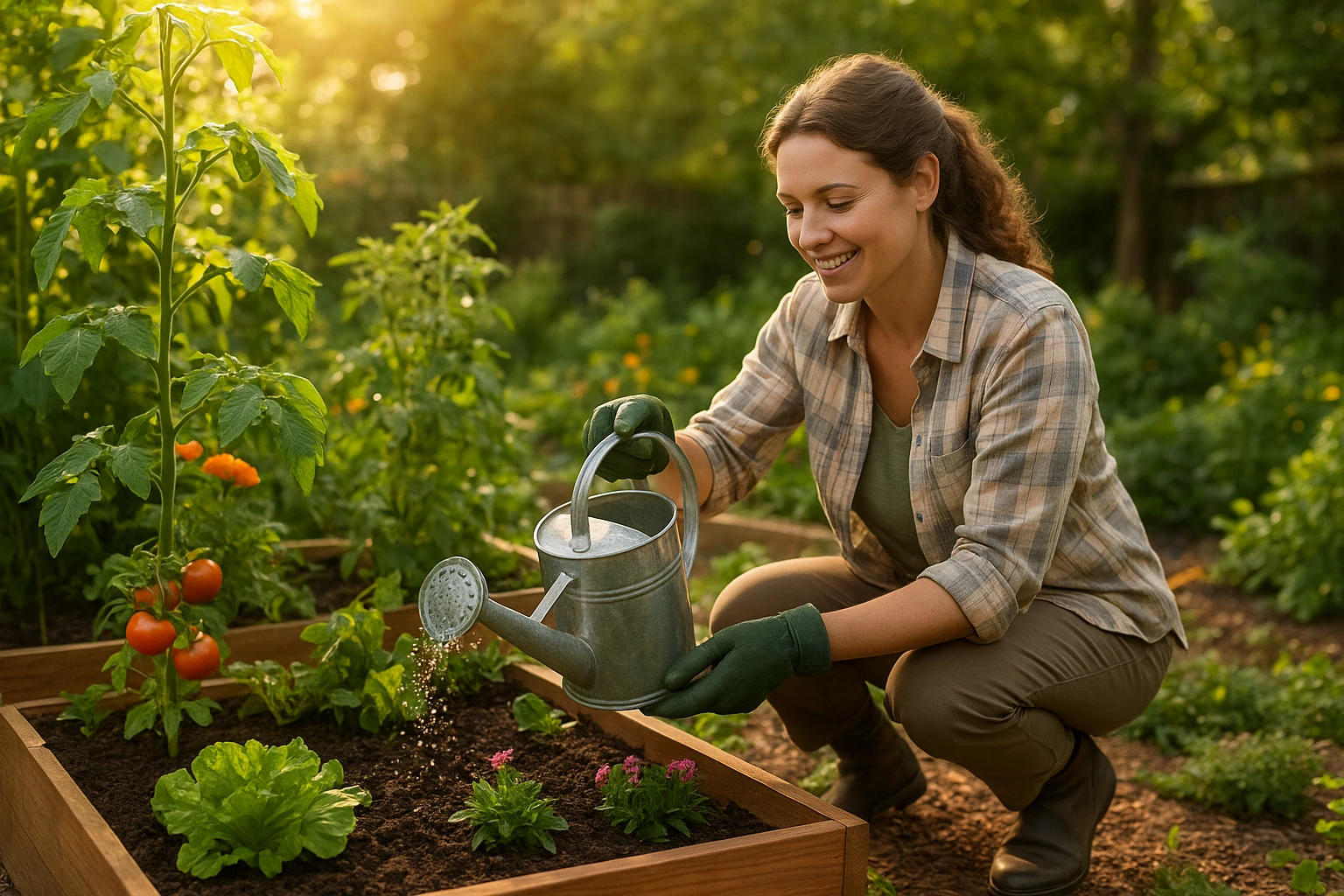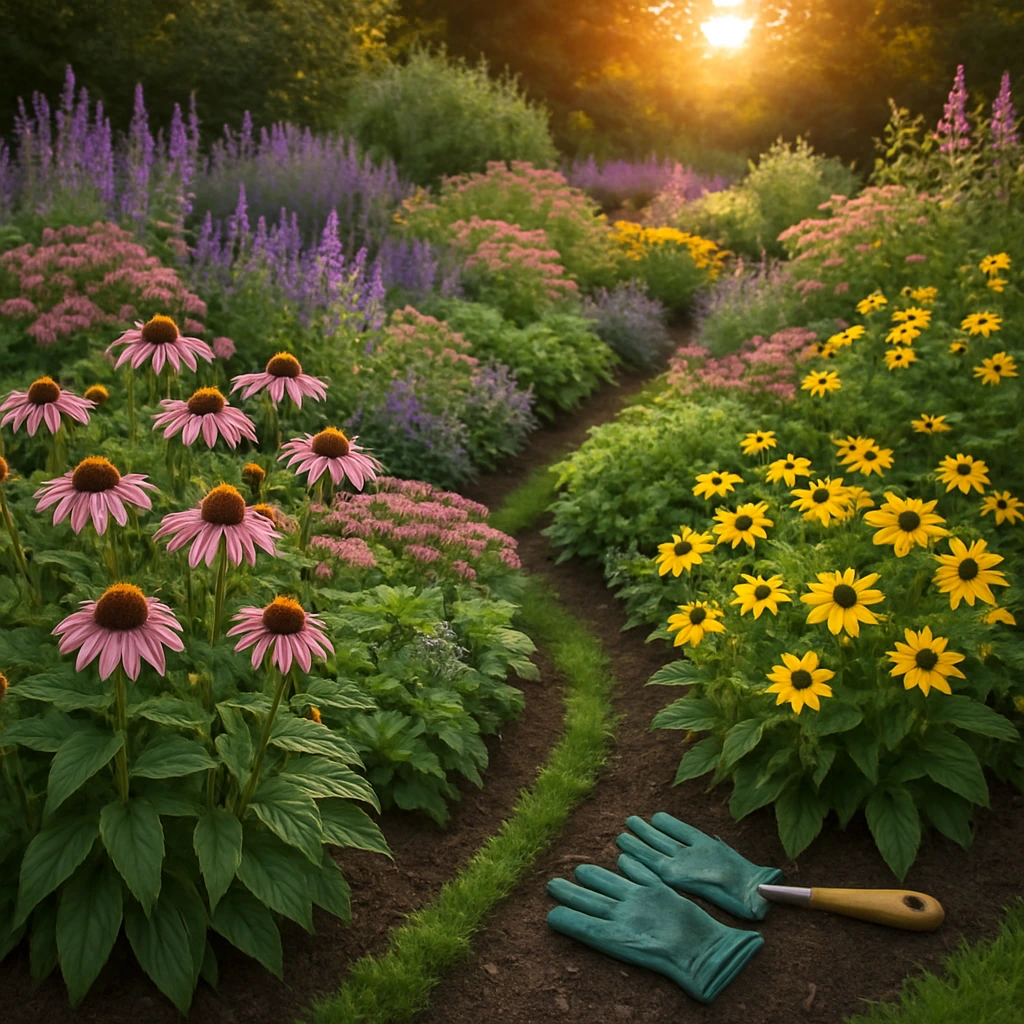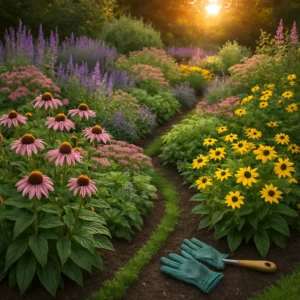When I first started gardening over a decade ago, I wish someone had shared the essential gardening tips every gardener should know—it would have saved me from making almost every mistake.
Planting tomatoes in heavy clay that stayed soggy all season, overwatering cucumbers until they turned yellow, and forgetting that my backyard is basically a buffet for slugs.
Those early disasters taught me that success in gardening is not just about passion—it’s about understanding the fundamentals experienced gardeners take for granted.
If you have had similar frustrations, don’t worry—your ae not alone.
The good news? Gardening doesn’t have to feel like guesswork.
With the right strategies, you can avoid the common pitfalls and create a thriving garden you will enjoy tending.
Today, I want to share Gardening Tips Every Gardener Should Know—practical, time-tested lessons from my 10+ years in the soil.
These are not abstract theories; they are the exact methods that turned my garden from trial-and-error into a place of reliable harvests and healthy plants.
Whether growing a small backyard plot, raised beds, or a few containers on the patio, these tips will help you grow smarter, not harder.
Gardening Tips Every Gardener Should Know
Whether you are just starting your first container garden or you have been growing for years, these battle-tested insights on gardening tips every gardener should know will save you time, money, and heartbreak.
I’m sharing the secrets that gardening books don’t always tell you – the ones I wish someone had shared with me when I was staring at my first brown, crispy seedlings, wondering what went wrong.
1. Start with Healthy Soil
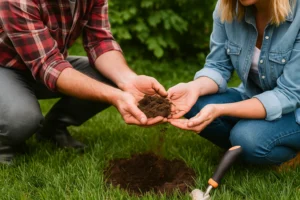
If your soil is not right, nothing else matters.
Healthy soil is the foundation of every thriving garden.
I learned this the hard way when I spent my first two years trying to “fix” weak plants with fertilizer—when the real problem was lifeless dirt.
- Test first: Buy an affordable soil test kit or send a sample to your local extension service. This gives you your soil’s pH and nutrient levels.
- Amend slowly: Don’t dump random fertilizers in; instead, add compost, worm castings, or aged manure to improve structure and fertility.
- Texture matters: Sandy soil drains too fast, while clay soil suffocates roots. Mixing in organic matter balances both extremes.
One personal rule I follow is to add at least an inch of compost to my beds every spring and fall.
It’s like giving the soil a vitamin boost, and the payoff in plant growth is huge.
2. Gardening Tips for Growing Conditions
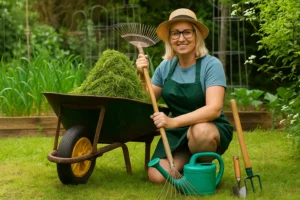
Before you rush out to buy seeds or seedlings, it’s critical to understand your unique growing conditions.
Choosing the right plants for your environment saves time, money, and frustration.
- Know your hardiness zone: I garden in a region with surprisingly late frosts. Knowing my USDA zone keeps me from planting tender crops too soon.
- Track frost dates: A single unexpected frost can wipe out weeks of work. Keep your local frost calendar handy and always be ready with row covers or cloches.
- Microclimates are real. One corner of my yard gets full sun, and another is shaded half the day. I plant sun-loving peppers in the hot spot and lettuces in the cooler area.
- Sunlight needs: “Full sun” means 6–8 hours daily. Don’t assume—actually check how much light each spot receives.
Tip: If unsure, start small with plants that tolerate various conditions, like beans, zucchini, and herbs.
Keep a simple garden journal, noting your last frost date each spring.
Official dates are averages, but your yard might consistently frost a week later or earlier than the official prediction.
3. Gardening Tips for Soil and Water
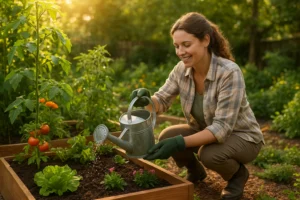
Even if your soil is decent, you must manage it well. And watering? That’s where most gardeners either overdo it or starve their plants.
- Deep, not frequent: I used to water lightly every day. Now I water deeply 2–3 times a week. This trains the roots to grow down, making plants more drought-resistant.
- Morning is best: Watering in the morning reduces evaporation and gives leaves time to dry, which prevents disease.
- Mulch works wonders: A layer of straw, shredded leaves, or bark mulch conserves moisture and keeps weeds down.
- Soil life matters: Earthworms, fungi, and microbes all help feed your plants. Avoid overusing chemical fertilizers that kill beneficial organisms.
Personal example: Once I switched to drip irrigation with a simple timer, my plants grew more evenly, and I saved water.
4. Gardening Tips for Planting and Transplanting
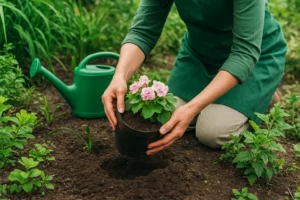
Planting seems straightforward, but technique makes a big difference.
- Proper depth: Seeds planted too deep may never sprout, while shallow seeds dry out. Always check the packet.
- Spacing matters: I once crowded too many peppers in one bed. The result? Small fruits and more disease. Follow spacing guides, even if it feels sparse.
- Gentle transplanting: When moving seedlings outdoors, handle them by the leaves, not the stem. Stems are fragile; leaves can regrow.
- Hardening off: Don’t shock your seedlings by tossing them into full sun. Introduce them gradually to outdoor conditions over a week.
I’ve lost entire trays of seedlings because I skipped hardening off. Lesson learned: Patience pays off big time here.
5. Gardening Tips for Fruits and Vegetables
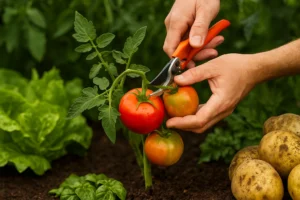
Edible gardening is where the fun really kicks in—but it’s also where mistakes can cost you harvests.
- Tomatoes: Stake them early and prune suckers for better airflow. I used to let mine sprawl, but pruning dramatically reduced blight.
- Potatoes: Don’t just stick them in the ground—hill them up with soil or mulch as they grow to prevent green, toxic tubers.
- Leafy greens: Harvest outer leaves first; the plant keeps producing.
- Companion planting: Basil near tomatoes improves flavor and deters pests. Marigolds near beans and cucumbers keep insects at bay.
Tip: Grow what your family actually eats. That means tomatoes, lettuce, peppers, and herbs—not fancy crops I won’t use.
6. Gardening Tips for Pruning and Trimming
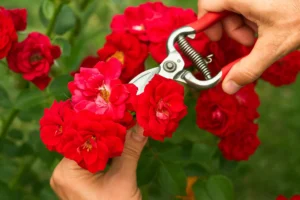
Pruning used to intimidate me, but I realized how powerful it is for plant health once I started.
- Deadhead flowers: Removing spent blooms encourages more blossoms.
- Fruit trees: Prune in late winter when dormant. Remove crossing branches to improve airflow.
- Perennials: Cut back in late fall or early spring to encourage fresh growth.
- Bulbs: After blooming, let leaves die back naturally—they feed the bulb for next year.
One spring, I got overzealous and cut back my lilacs too late. I didn’t see flowers again until the following year. Timing matters!
7. Weed Early, Mulch Often
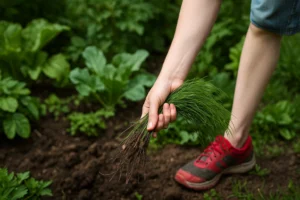
I used to declare war on every weed and pest in my garden. It was exhausting and expensive.
Now, I focus my energy where it matters most and work with nature instead of against it.
Weeds compete for water and nutrients; if you let them get ahead, they will overwhelm your plants.
- Catch them young: Pull weeds when the soil is damp, before roots anchor deeply.
- Mulch barrier: A thick mulch layer blocks sunlight, preventing most weeds from germinating.
- Stay consistent: Ten minutes of weeding a few times a week beats an exhausting weekend battle.
Personally, mulching was a game-changer for me.
My weeding time dropped by half, and my soil stayed moist even in summer heat.
8. Pests and Natural Control
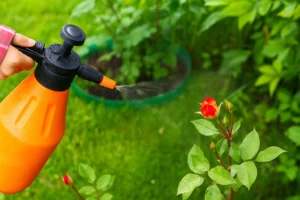
Chemical sprays aren’t your only option. In fact, they often cause more problems by killing beneficial insects.
- Neem oil & insecticidal soap: Safe for most vegetables and effective against aphids and mites.
- Encourage beneficial: Ladybugs, lacewings, and birds are natural pest control.
I plant dill and fennel to attract them.
- Companion planting: Garlic and onions repel many pests naturally.
- Physical barriers: Row covers and netting protect against caterpillars and birds.
One year, I fought squash bugs all season.
The following year, I rotated crops and planted nasturtiums nearby—squash bugs were almost gone.
9. Prevent Problems Before They Start
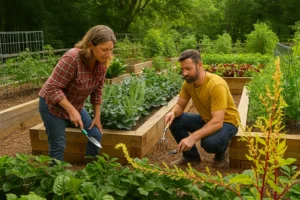
In my early gardening days, I spent way too much time searching the Internet at midnight, asking things like, “Why are my tomato leaves turning yellow?”
It took me years to realize something important—it’s much easier to prevent problems than to fix them later.
Rotate Your Crops
One of the smartest moves you can make is not planting the same family of plants in the same spot every year.
- For example, tomatoes, peppers, and eggplants belong to the nightshade family. If I plant them in the same spot year after year, the soil gets tired, the nutrients run out, and the same pests keep showing up.
- Moving them around each season gives the soil a break and stops many diseases before they even start.
Plant Good Neighbors
Companion planting might sound like an old gardening myth, but trust me—it works.
- Basil near tomatoes: Helps keep specific bugs away.
- Marigolds in vegetable beds: Their roots contain natural chemicals that fight tiny soil pests.
- Nasturtiums: I grow these as “trap plants.” Bugs like aphids love them more than my vegetables, so the nasturtiums take the hit.
10. My Go-To Disease Prevention Tricks
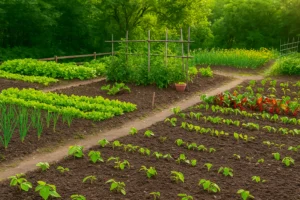
Over the years, these simple habits have saved me countless headaches:
- Use mulch: It keeps soil from splashing onto leaves (which spreads disease).
- Give plants space: Crowded plants stay damp and often get mildew. Proper spacing keeps the air flowing.
- Water at the base: Wet leaves invite trouble. Aim for the soil, not the plant.
- Remove sick plants fast: If something looks diseased, I pull it out and never toss it in the compost. That way, the problem doesn’t spread.
Takeaway: Healthy gardens don’t just happen—they’re built by smart habits.
If you focus on prevention, you will spend less time fighting problems and more time enjoying your harvest.
11. Grow What You Love (and What You Will Eat)
It’s tempting to try everything, but the best gardens are the ones you actually enjoy tending and harvesting.
- Focus on favorites: If you love fresh salads, grow lettuce and cucumbers. If you cook many Italian dishes, basil and tomatoes should be top picks.
- Avoid waste: I once grew a row of amazing eggplants, but hardly cooked with them. Now I focus on the crops my family eats weekly.
- Emotional reward: There’s nothing like walking outside, snipping fresh herbs, and adding them to dinner.
12. Keep Learning and Observing
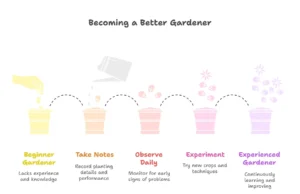
Gardening isn’t static. Every season brings new lessons.
- Take notes: Keep a simple notebook or digital journal of what you planted, where, and how it performed.
- Observe daily: Catching problems early—like yellowing leaves or insect damage—makes them easy to fix.
- Experiment: Try one new crop or technique each year.
Last year, I tried vertical trellising for cucumbers, which nearly doubled my yield.
Even after ten years, I’m still learning.
The best gardeners aren’t the ones who know everything—they are the ones who keep paying attention.
Conclusion
Gardening tips every gardener should know doesn’t have to be complicated.
By starting with healthy soil, matching plants to your conditions, watering smart, pruning at the right time, and staying consistent with weeding and pest control, you will see steady improvement in your garden.
Most importantly, grow what brings you joy.
The truth is, the more you engage with your garden, the more it gives back—not just in harvests but also in peace of mind.
Start with these gardening tips every gardener should know, and watch your garden transform from a chore into a source of pride.
Now Your turn: What is one gardening mistake you have made that taught you a valuable lesson? Share it—I would love to hear your story.
FAQs
1. What’s the single most crucial gardening tip for beginners? Start with your soil. Healthy soil sets the stage for nutrients, water retention, and root growth.
2. How often should I water my vegetable garden? Most gardens need about 1–1.5 inches of water per week. Deep watering 2–3 times weekly is usually better than daily shallow watering.
3. Can I reuse the same garden soil every year? Yes, but it should be refreshed with compost or organic matter. Crop rotation also helps prevent soil-borne diseases.
4. What natural methods keep pests under control? Companion planting, encouraging beneficial insects, neem oil sprays, and physical barriers like row covers are effective strategies.
5. How do I know if I’m planting too early in spring? Check your local frost dates. Plant tender crops like tomatoes and peppers only after the last expected frost.
